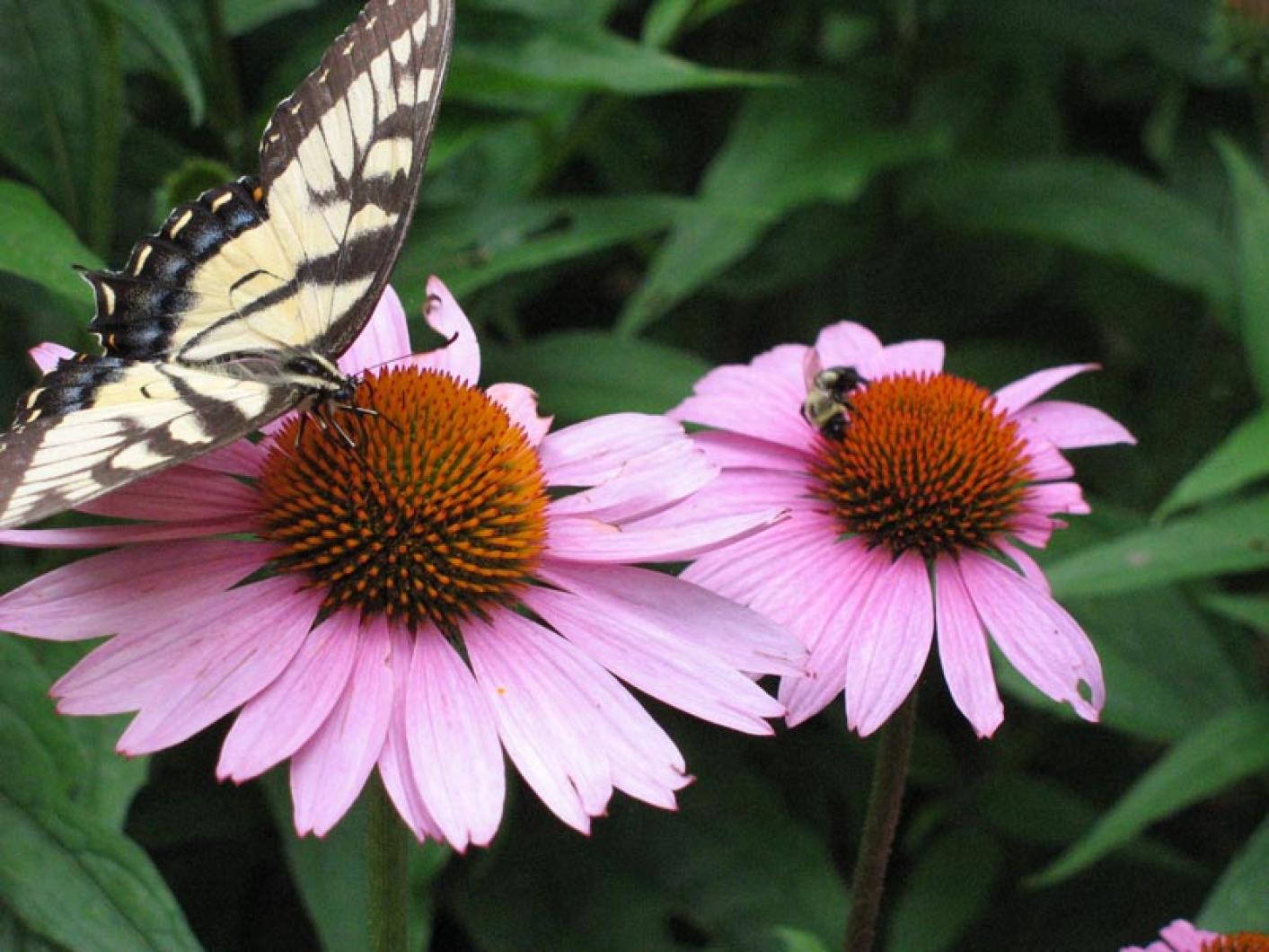Dr. H.C.F. Meyer was a true believer.
His passion was purple — purple coneflower — and it would be correct to say that he was the first commercial coneflower prophet. Coneflower is the common name of members of the Echinacea genus of plants. Native to eastern and central North America, they can be recognized by their daisy-like, cone-shaped flowers with central spiny disks. The word Echinacea comes from the root ‘echino,’ meaning hedgehog or sea urchin, referring to that prickly center core.
Long before Dr. Meyer, native Americans used this plan medicinally for many bodily ills. But, it was Dr. Meyer who brought the plant to the public eye.
In 1871, as a Nebraska patent medicine salesman, Dr. Meyer marketed a root tincture he called Meyer’s Blood Purifier. Promising a cure for all ills, he sang its virtues: “This is a powerful drug as an Alterative and Antiseptic in all timorous and Syphilitic indications: old chronic wounds, such as fever sores, old ulcers, Carbuncles, Piles, eczema, wet or dry, can be cured quick and active... It will not fail in gangrene.. In fever it is a specific . . . It relieves pain, swelling and inflammation . . . It has not and will not fail to cure Diphtheria quick . . . It has cured hydrophobia.”
Clearly, in his mind, this medicine could cure anything. He goes on to give an example of its potential effectiveness, “The child . . . was bitten on the foot by a rattlesnake. In order to save her life, the leg of the child was amputated at the knee joint by the doctor. One or two ounces of Echinacea would not only have saved the poor child’s leg, but the medicine would have made a complete cure.” It is no wonder that this plant is also called rattlesnake weed and snakeroot (and that patent medicine salesmen were called snake oil salesmen).
Others jumped on the Echinacea bandwagon. Dr. J.S. Leachman of Sharon later concurred. Writing in 1914, he additionally recommended this plant for livestock health. “Old settlers all believe firmly in the virtues of Echinacea root, and use it as an aid in nearly every sickness. If a cow or horse does not eat well, the people administer Echinacea, cut up and put in feed. I have noticed that puny stock treated in this manner begin to thrive.”
The most outrageous claim came from Melvin Gilmore, author of Uses of Plants by the Indians of the Missouri River Region. He relayed a story that insisted that “jugglers [magicians] bathed their hands and arms in the juice of this plant so that they could take out a piece of meat from a boiling kettle with the bare hand without suffering pain, to the wonderment of onlookers.”
Makes you wonder if there is any condition that Echinacea can’t heal. Though scientific studies have shown Echinacea to be sometimes effective and other times ineffective in treating different conditions, the public continues to accept as true its healing powers. Among American adults surveyed in 2002, Echinacea was reportedly the most commonly-used herbal product in the U.S., with more than 40 per cent of adults surveyed responding that they had taken the herb over the past 12 months! This may not be a bad thing, especially if you profess to the power of this plant.
Perhaps, Dr. Meyer was not just a quack, but a sensible physician using traditional plant-based remedies. Taking it to a higher level, he might have been simply following holy advice from above. “The Lord hath created medicines out of the earth;” says Ecclesiasticus 38:4-5, “and he that is wise will not abhor them.”
Suzan Bellincampi is director of the Felix Neck Wildlife Sanctuary in Edgartown.




Comments
Comment policy »